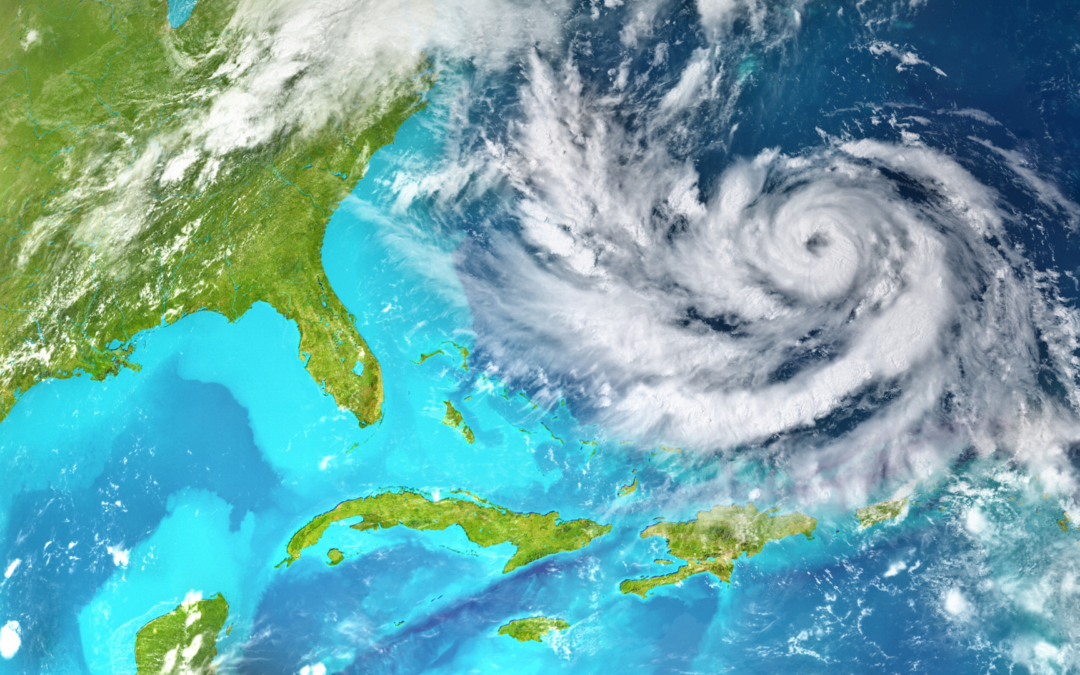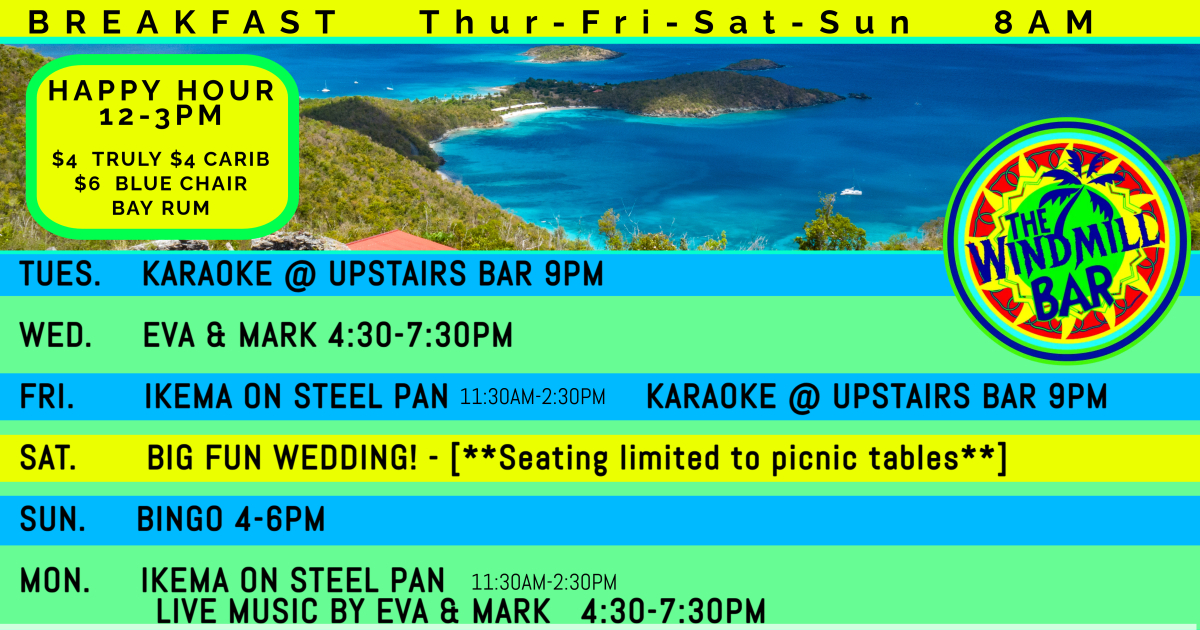When Is Hurricane Season in the Caribbean? Atlantic hurricane season, which affects the Caribbean, officially runs from June 1st to November 30th each year. As the warm waters of the Caribbean Sea provide the perfect breeding ground for hurricanes, it’s important for residents and travelers alike to understand the ins and outs of hurricane season and be prepared for any potential storms that may arise. In this article, we will delve into the Caribbean hurricane season, its historical patterns, how to prepare your home, evacuation plans, hurricane season forecasting, emergency supplies checklist, the impact of climate change, the role of technology in tracking hurricanes, community response and support, as well as post-hurricane recovery and rebuilding efforts.
Table of Contents
Understanding the Caribbean Hurricane Season
Before diving into the details, let’s explore what the Caribbean hurricane season entails. This period is characterized by frequent tropical cyclones, with the potential to bring devastating winds, heavy rainfall, storm surges, and flooding to the region’s islands and coastal areas. Understanding the season’s dynamics is crucial for residents and travelers to minimize risks and stay safe.
What is a hurricane?
A hurricane is a large, rotating storm with strong winds, usually accompanied by heavy rain and thunderstorms. It forms over warm ocean waters and gains strength as it moves across the sea. Hurricanes are categorized on the Saffir-Simpson Hurricane Wind Scale, ranging from Category 1 (weakest) to Category 5 (strongest).
Why is the Caribbean prone to hurricanes?
The Caribbean’s geographic location, warm sea surface temperatures, and favorable atmospheric conditions make it prone to hurricanes. Trade winds and the Coriolis effect also contribute to the formation and movement of these storms. Additionally, the Caribbean Sea acts as a funnel, directing hurricanes towards its islands and surrounding coastal areas.
How do hurricanes develop in the Caribbean?
Hurricanes in the Caribbean typically develop from tropical waves, disturbances in the atmosphere that form over the warm waters of the Atlantic Ocean. As these tropical waves move westward, they can gain energy from the warm ocean surface, leading to the formation of storms. Once a storm’s sustained wind speed reaches 39 miles per hour, it is classified as a tropical storm. If the wind speed increases to 74 miles per hour or more, it becomes a hurricane.
Historical Patterns of Hurricanes in the Caribbean
To better understand the Caribbean hurricane season, it is important to examine its historical patterns. Over the years, the region has experienced numerous impactful storms, some of which have left lasting marks on the islands and their communities.
Frequency of hurricanes
The Caribbean typically sees an average of 12 tropical storms and hurricanes each season. However, the actual number can vary from year to year. Some seasons have been relatively quiet, while others have seen a higher number of storms. It’s important to note that not all storms that develop in the Atlantic Basin affect the Caribbean.
Most affected areas
While hurricanes can impact any part of the Caribbean, certain islands are more prone to experiencing the brunt of these storms. Areas such as Puerto Rico, Cuba, the Dominican Republic, and the Lesser Antilles tend to be more frequently affected due to their geographical position within the hurricane tracks.
Notable historical hurricanes
The Caribbean has witnessed some of the most devastating hurricanes in history. Hurricanes like Hurricane Maria (2017), Hurricane Irma (2017), and Hurricane Katrina (2005) have caused extensive damage, loss of life, and long-lasting effects on the affected islands. These storms serve as reminders of the power and destructive capabilities of hurricanes.
Preparing Your Home for Hurricane Season
As hurricane season approaches, it’s essential to take proactive measures to protect your home and ensure the safety of your family.
Secure windows and doors
One of the first steps in preparing your home is to secure windows and doors. Reinforce them with storm shutters or plywood to prevent wind and flying debris from entering your property.
Trim trees and secure outdoor objects
To minimize damage caused by falling trees or branches, it’s important to trim any overhanging tree limbs near your home. Additionally, secure outdoor objects such as patio furniture, potted plants, and garbage cans or bring them indoors to prevent them from becoming projectiles in high winds.
Have an emergency supply kit
Creating an emergency supply kit is crucial for surviving the aftermath of a hurricane. This kit should include essentials such as non-perishable food, water, flashlights, batteries, a first aid kit, medications, important documents, and cash.
Develop an evacuation plan
In the event of a severe hurricane, it may be necessary to evacuate your home. Develop an evacuation plan that includes identifying evacuation routes, knowing the nearest shelter locations, and ensuring everyone in your household understands the plan.
Review insurance coverage
Prior to hurricane season, review your homeowner’s insurance coverage to ensure it adequately protects your property against potential damages caused by hurricanes. Consider adding additional coverage if necessary.
Evacuation Plans and Safety Tips
When a hurricane threatens your area, it’s important to follow recommended evacuation plans and prioritize safety.
Stay informed
Monitor local news, radio, or official weather websites for updates and evacuation orders. Be aware of the storm’s trajectory, intensity, and any recommended safety measures.
Follow evacuation orders
If local authorities issue evacuation orders, it’s crucial to comply for your safety. Leave as soon as possible, following designated evacuation routes and instructions provided by emergency management officials.
Prepare a “go bag”
Pack a “go bag” with essential items such as clothing, medications, important documents, and supplies for a few days. Keep this bag easily accessible in case you need to evacuate quickly.
Inform loved ones
Inform friends and family of your evacuation plans and whereabouts. Maintain regular communication to provide updates on your safety and well-being.
Hurricane Season Forecasting and Predictions
Forecasting and predicting hurricanes is an essential part of hurricane preparedness in the Caribbean. Numerous organizations and meteorological agencies work tirelessly to provide accurate and timely information.
Hurricane forecasting tools
Advanced technology such as weather satellites, hurricane hunter aircraft, and computer models play a vital role in tracking hurricanes and providing forecasts. These tools help meteorologists predict a storm’s path, intensity, and potential impact on affected areas.
Seasonal hurricane forecasts
Before the start of the Atlantic hurricane season, various organizations issue seasonal forecasts to provide an outlook on the expected activity. These forecasts take into account factors such as sea surface temperatures, El Niño/La Niña patterns, and historical hurricane data.
The uncertainty factor
While forecasters strive to provide accurate predictions, it’s important to remember that there will always be a degree of uncertainty. Weather patterns can change rapidly, and even minor shifts in a storm’s track or intensity can have significant impacts on the affected areas.
Emergency Supplies Checklist for Hurricane Season
Having the right emergency supplies on hand can make a significant difference in your safety and well-being during and after a hurricane. Here’s a checklist to ensure you’re prepared:
- Non-perishable food items
- Bottled water
- Flashlights
- Batteries
- First aid kit
- Medications
- Important documents (identification, insurance policies, etc.)
- Cash (ATMs may not be accessible during power outages)
- Extra clothing and blankets
- Toiletries and personal hygiene items
- Cell phone and charger (consider a portable power bank)
- Battery-powered or hand-cranked radio
Impact of Climate Change on Caribbean Hurricanes
Climate change has become a significant concern when it comes to the intensity and frequency of hurricanes in the Caribbean.
Warmer sea surface temperatures
As the planet warms, sea surface temperatures in the Caribbean are on the rise. Warmer waters provide more energy for hurricanes, potentially leading to stronger storms.
Increased rainfall and storm surges
Climate change also contributes to heavier rainfall associated with hurricanes. This, combined with rising sea levels, can cause more extensive flooding and storm surges, posing significant risks to coastal communities.
The need for adaptation and mitigation
Given the potential impacts of climate change on hurricanes, efforts to adapt to and mitigate its effects are crucial. This includes investing in resilient infrastructure, implementing effective early warning systems, and reducing greenhouse gas emissions to combat further warming.
The Role of Technology in Tracking Hurricanes
Advancements in technology have greatly enhanced our ability to track hurricanes in real-time, providing valuable information for forecasting and preparedness.
Weather satellites
Weather satellites orbiting the Earth continuously monitor the atmosphere, providing meteorologists with images and data on storms as they develop and move across the ocean. These satellites play a vital role in hurricane tracking and forecasting.
Hurricane hunter aircraft
Hurricane hunter aircraft are flown directly into hurricanes to collect crucial data on the storm’s structure, intensity, and movement. This information helps meteorologists refine their forecasts and warn affected areas more accurately.
Computer models
Computer models simulate various factors influencing a storm’s behavior, enabling meteorologists to create projections and predict its path. These models take into account atmospheric conditions, ocean temperatures, and other relevant data.
Community Response and Support During Hurricane Season
Hurricanes not only bring destruction but also foster a sense of community and resilience in the face of adversity.
Preparedness campaigns and education
Communities come together to raise awareness about hurricane preparedness through campaigns and educational initiatives. These aim to inform residents about the risks, provide guidance on how to prepare, and encourage proactive measures.
Volunteer organizations and local support
During and after hurricanes, volunteer organizations and local communities mobilize to provide support to those affected. From distributing food and supplies to helping with cleanup efforts, their collective efforts make a significant impact on the recovery process.
International aid and assistance
In cases of severe hurricanes, international aid organizations and neighboring countries often step in to provide assistance. This support includes emergency supplies, healthcare services, and infrastructure rebuilding efforts.
Post-Hurricane Recovery and Rebuilding Efforts
Recovering from the aftermath of a hurricane is a challenging process that requires coordination, resources, and resilience.
Assessing damages
After a hurricane passes, the first step is to assess the damages. This includes evaluating infrastructure, properties, and public facilities to determine the extent of destruction.
Restoring essential services
Restoring essential services such as power, water, and communication systems is vital for the recovery process. Repairing and rebuilding damaged infrastructure is a priority to ensure the well-being of affected communities.
Supporting affected communities
Supporting affected communities involves providing temporary shelter, food, and medical assistance to those who have lost their homes or are displaced. Psychological support is also crucial for helping individuals cope with the emotional aftermath of a devastating event.
Long-term rebuilding efforts
Rebuilding efforts may take years, especially in cases of severe destruction. Communities, government agencies, and international organizations collaborate to develop sustainable plans for reconstruction and long-term resilience against future hurricanes.
Conclusion
As the Caribbean hurricane season approaches, it is essential to be prepared and knowledgeable about the risks and measures to minimize their impact. Understanding the dynamics of hurricane development, historical patterns, and the role of technology in tracking and forecasting hurricanes can help individuals and communities navigate through this challenging time. By staying informed, having emergency supplies ready, following evacuation plans, and supporting one another, we can weather the storms and emerge stronger in the face of adversity.
As we approach another hurricane season in St. John, USVI, we at The Windmill Bar want to remind everyone to stay safe and prepared. Hurricanes can be unpredictable and potentially dangerous, so it’s important to have a plan in place. Whether you’re a resident or a visitor, we wish you all a safe hurricane season. Remember to stay informed, follow evacuation orders, and take care of yourselves and your loved ones. Together, we can weather any storm that comes our way.


